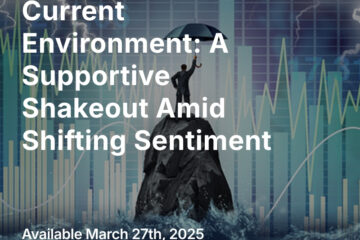Of course, all eyes are on the Fed, inflation, and employment, so much of what we wrote above fills out our general view of where markets are and what is most important to pay attention to.
We’ve commented many times in the past about the rise of ESG investing — that is, the application of environmental, social, and governance scrutiny to investment portfolios. Of course, we’re not strangers to this process — we were doing it long before there was an acronym for it. For decades we have helped clients to shape stock portfolios that excluded companies of whose activities they disapproved, and included companies whose activities they wanted to champion. Sometimes the criteria were environmental; sometimes clients wanted to avoid companies that profited from war or from the sale of addictive and harmful products; sometimes clients were concerned with labor issues and working conditions.
Our skepticism about ESG investing as a phenomenon is thus unrelated to our positive view of values-based investing and our desire to serve our clients. However, we see the large-scale marketing of ESG products to be more of a veneer than a reality. We have watched as the ability of large corporates to “game” ESG scores turned most big ESG funds into little more than large-cap growth funds — indistinguishable from more plain-vanilla index funds, but with higher management fees. This, we believed, is not what is called for in an application of personal values to portfolio construction. What we do takes care, insight, and research — not just an algorithm or an easy adherence to an opaque scoring system provided by some research firm with unknown conflicts of interest.
It seems that the force of circumstance is leading some other big players into our way of thinking. Changes are afoot at the Securities and Exchange Commission that would make more stringent rules about how ESG funds can market themselves, and how transparent they will need to be to customers about their evaluation criteria. We suspect that the results would be eye-opening if these new rules were passed. Some sectors and industries that have not fared well under ESG as constituted thus far — such as legacy hydrocarbon energy producers — may see their fortunes rise as reporting becomes more thorough and neutral. As it is, the same company can have radically different ESG rankings from different rating agencies — and that implies plenty of scope for error and malfeasance.
This new stringency and neutrality will probably reveal that there is not much “there” there in “big ESG” — and we’re already seeing that in a recent kerfluffle about misleading ESG claims at Deutsche Bank.
Crypto
As crypto continues in the doldrums along with the high-tech names with whom it is still largely correlated, we want to make two brief observations.
One: if this is a “crypto winter” — one of those multi-year episodes in which crypto remains depressed and forgotten — it’s a strange one. Institutional interest in crypto adoption remains high, as does technological innovation and the development of new blockchain applications and platforms.
Two: We read a recent roundtable discussion on crypto in the pages of Barron’s with interest. (It’s notable that the magazine chose this moment to inaugurate a regular crypto roudtable discussion.) The four analysts hosted fall more or less into “good cop” and “bad cop” roles, with one of the latter being Cornell economics professor Eswar Prasad. Even Mr Prasad, however, said this:
“It’s hard to make the case against holding, say, 2% to 3% of your portfolio in crypto, because even if the value of those assets goes to zero, you’re not out very much. But the upside could be enormous.”
It’s hard to overstate the transformation represented by a mainstream, crypto-skeptical economist being willing to voice such an opinion in a venerable financial journal.
What Mr Prasad expressed is essentially our philosophy (though we don’t advocate holding anything we think might go to zero), and what we have been working to implement for our clients who have the appropriate risk tolerance. In one form or another, crypto — and very likely decentralized crypto, not just blockchain, not just stablecoins, and not just digital fiat currencies — is going to be a major part of the future of money and perhaps more pervasively of the financial system as a whole. We think that it is a worthwhile portfolio diversification.
Thanks for listening; we welcome your calls and questions. We’ll be hosting a Zoom call on June 30 — keep an eye out for the link, and please send us your questions ahead of time.



